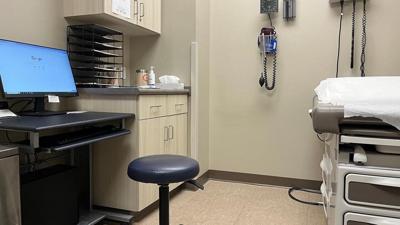![]()
We know primary care is crucial, so why is it declining?
Doctors and healthcare experts agree (and research shows) that access to primary care plays a key role in keeping people healthy. But over the past decade, spending on primary care has declined in the U.S., and so has the number of primary care providers, SafeRide Health reports.
That trend is likely to continue even faster due to major spending cuts included in the “Big Beautiful Bill” passed in July, according to a new report from the Milbank Memorial Fund and the National Academy for State Health Policy.
The new law cuts federal Medicaid spending as well as state funding options. The resulting financial pressures will likely create barriers to care for patients and squeeze providers and healthcare facilities even further. That means some will go out of business, and others will no longer be able to afford treating Medicaid patients.
A variety of factors have led to declining primary care access over the past decade:
- Funding: Spending on primary care in the U.S. has been gradually falling for years—from 6.2% of overall healthcare spending in 2013, across all payers, to 4.6% in 2022. The American Medical Association has calculated that Medicare physician payments have dropped 29% since 2001 when adjusted for inflation. That’s despite the fact that primary care can generate long-term savings; in Oregon, each $1 increase in primary care spending saved $13 for other services such as specialty care and emergency department visits.
- Current workforce: The number of primary care providers—which includes doctors, physician associates, and nurse practitioners—dropped from 105.7 per 100,000 people in 2021 to 103.8 per 100,000 in 2022. That same year, 10.6% of U.S. adults couldn’t find an available appointment when needed, so they didn’t see any medical provider at all.
- Future workforce: Many medical students are opting for higher-paying specialties over primary care. While the number of primary care residents remained at 17 per capita between 2020 and 2022, the rate of all specialties increased from 29 to 30 per capita. The American Academy of Pediatrics reported that 92% of pediatric residencies were filled in 2024, compared to 97.1% in 2023.
- Time-consuming documentation processes: More than 25% of family physicians said they were “very dissatisfied” or “somewhat dissatisfied” with their Electronic Health Record (EHR) systems, which can eat up valuable time and prevent them from seeing additional patients.
These factors are making primary care less attractive for many current and future care providers, and the Association of American Medical Colleges (AAMC) points out that as the U.S. population grows and ages, about a third of active physicians will retire in the next decade. The AAMC predicts that there will be a shortage of 20,200 to 40,400 primary care physicians by 2036.

Rural Communities and Primary Care
Areas historically underserved by the healthcare industry, including rural areas, are particularly vulnerable to shortages. The American Medical Association reports that about 65% of rural areas have a shortage of primary care providers and 136 rural hospitals closed between 2010 and 2021.
These trends have real consequences: “Rural residents have higher rates of cigarette smoking, high blood pressure, and obesity. They also have higher rates of poverty, less access to healthcare, and are less likely to have health insurance,” according to the Centers for Disease Control. Early death from the five leading causes of death—heart disease, cancer, injury, chronic lower respiratory disease, and stroke—is more common in rural than urban areas.
Transportation in Focus
What are the benefits of primary care? PCPs can help detect and treat medical conditions and diseases earlier, they can help patients manage chronic diseases effectively, and they provide preventative services such as vaccinations and medical screenings.
There can be multiple barriers to receiving primary care, including insurance coverage, language, childcare, work obligations, and transportation: According to a study in the American Journal of Public Health, 5.8 million people delayed medical care in 2017 because of transportation challenges. When there are fewer primary care providers, often spread further apart, transportation becomes even more crucial to ensure people can get to their appointments—and ideally develop a relationship with their care provider.
The good news is that Medicaid and many Medicare Advantage health plans do offer transportation benefits for members who don’t have reliable transportation. Those benefits help millions of people more easily access primary care via non-emergency medical transportation in both rural and urban areas.
This story was produced by SafeRide Health and reviewed and distributed by Stacker.





















(0) comments
Welcome to the discussion.
Log In
Keep it Clean. Please avoid obscene, vulgar, lewd, racist or sexually-oriented language.
PLEASE TURN OFF YOUR CAPS LOCK.
Don't Threaten. Threats of harming another person will not be tolerated.
Be Truthful. Don't knowingly lie about anyone or anything.
Be Nice. No racism, sexism or any sort of -ism that is degrading to another person.
Be Proactive. Use the 'Report' link on each comment to let us know of abusive posts.
Share with Us. We'd love to hear eyewitness accounts, the history behind an article.